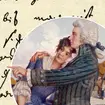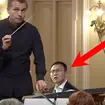Tchaikovsky - Serenade for Strings in C major
Tchaikovsky's heartfelt piece is among the best he ever wrote.
At the very time that Tchaikovsky was composing his nationalistic, powerful and undeniably noisy 1812 Overture, he was also writing this: the graceful, poised and rather sedate Serenade for Strings.
‘It is a heartfelt piece and so, I dare to think, is not lacking in real qualities,’ Tchaikovsky confided to his patron, Nadezhda von Meck.
The composer had recently rediscovered Mozart’s The Magic Flute at the time and deliberately set out to imitate Mozart’s style in the first movement. It doesn’t sound much like Mozart – it’s probably more the kind of music Tchaikovsky thought he would have written had he been around in Mozart’s era.
The second movement, a Valse, has become a popular piece in its own right and features one of Tchaikovsky’s best melodies. At its premiere, the movement had to be repeated. Tchaikovsky’s former teacher Anton Rubinstein declared it Tchaikovsky’s best piece.
Now considered one of the late Romantic era's definitive compositions, the Serenade has also been taken up as music for the ballet and films. The waltz movement was arranged for soprano and full orchestra for the 1945 musical Anchors Aweigh. It also rather bizarrely – and accidentally – accompanied the final countdown for the Trinity atomic bomb test July 16, 1945, when it was being broadcast by a radio station on the same frequency being used to transmit test communications.
























